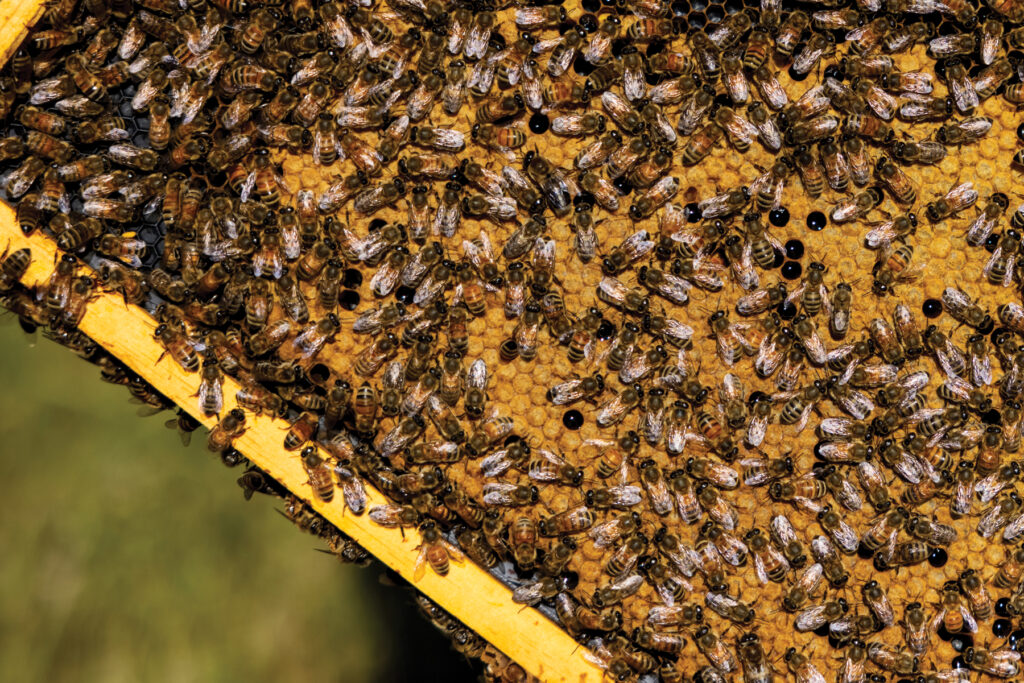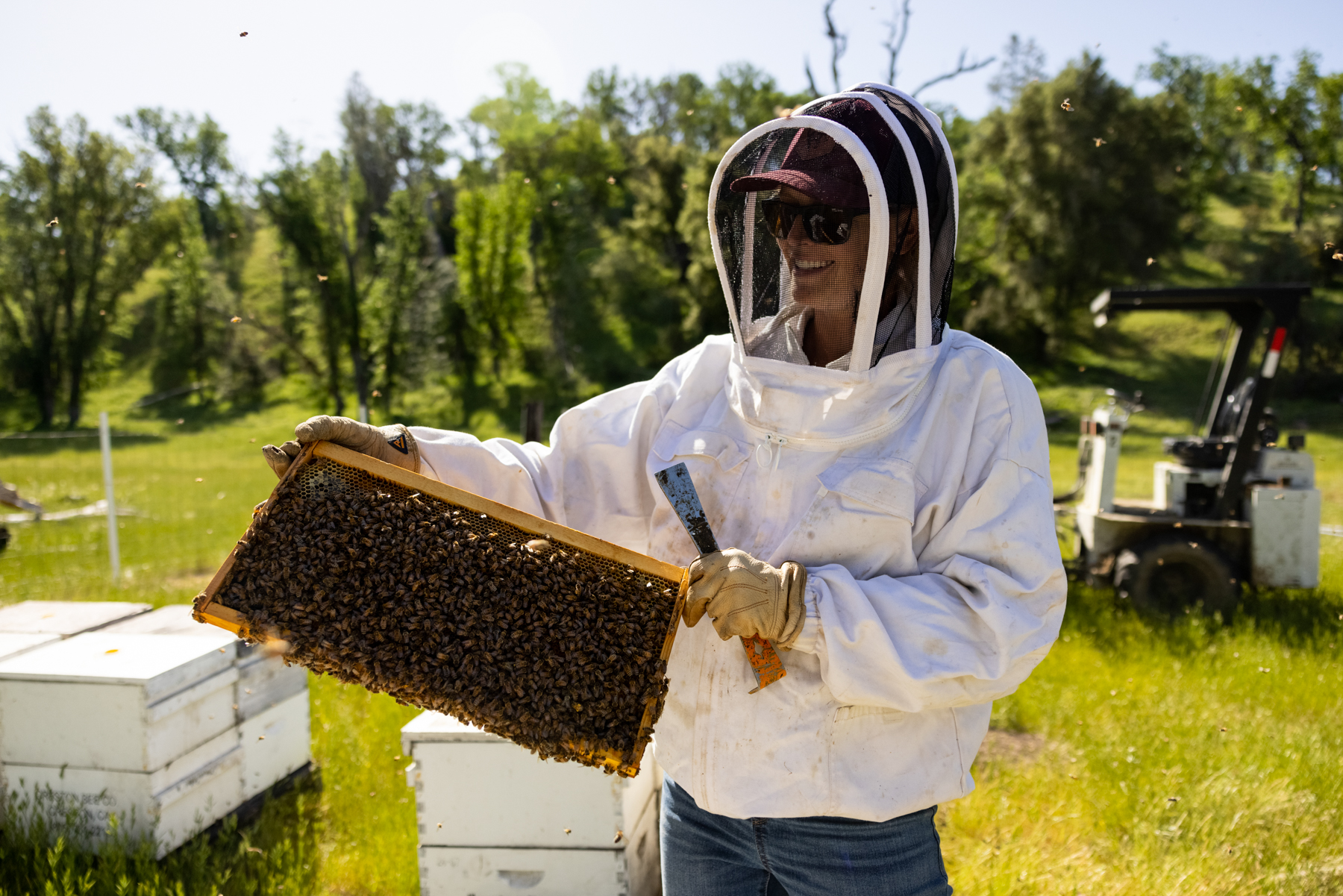
Queen Bee: Creston Bee Company
Story by Katy Budge
Photography by Ruby Wallau
She hadn’t planned on becoming a beekeeper. With a degree in wildlife biology from Cal Poly Humboldt, Riley Chestnut thought her career would focus on bigger fauna. Though she still works on-call as a consulting biologist, she’s now the proprietor of Creston Bee Company.
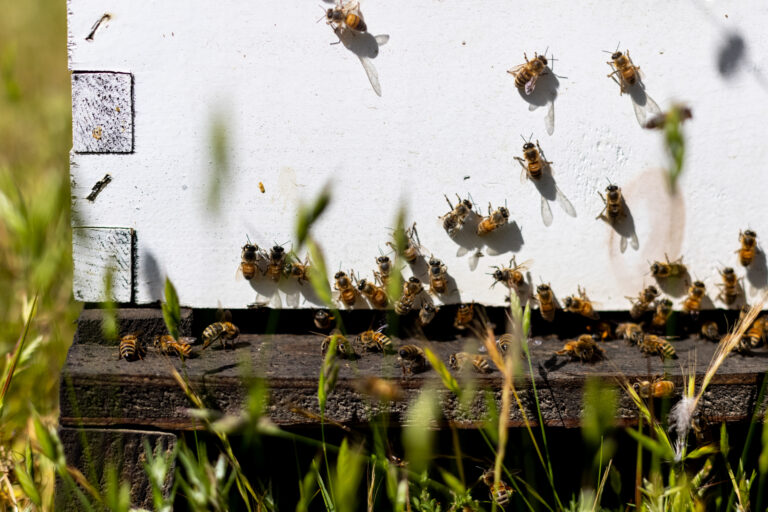
The operation began in 2019, thanks to urging from a Sacramento-area cousin with a thriving beekeeping business. After learning the ropes, Riley took the helm in 2021, but it’s still very much a family affair, especially since Riley and husband Jordan Lahargou recently welcomed a baby boy.
“Jordan took on a lot of duties when I was pregnant, as did my mom and brother (Karen and Shay Chestnut), and my cousin,” Riley says. “I worked in a limited capacity alongside them the whole time, but they were integral in maintaining the hive health and keeping the business going.”
Riley’s roots in San Luis Obispo County extend four generations, but she’s the first to dig into agriculture. Not so for Jordan, whose family can count five generations of local farming (his late grandfather Pierre Lahargou was renowned for the dry-farmed watermelons he brought to summertime farmers’ markets).

Creston Bee Company started in its namesake town, but now most of the hives are located at the venerable Avenales Ranch where Jordan is foreman. Owned by the Sinton family, the picturesque ranch on Shell Creek Road had a starring role in many of the “superbloom” photographs and videos that appeared on social media this spring.
Showers Brought Mixed Blessings
While the rains earlier in the year gave us all those beautiful flowers, they impacted Riley’s hives that were hired out to almond orchards for pollination. That service is an important source of income for most bee operations since honey alone won’t pay the bills. “I’m really more of a bee farmer than a honey producer,” Riley points out.
During the wet spring, the downpours prevented her from getting to her hives as often as she would have liked. “I really kind of missed them,” she acknowledges. “It was the longest period I haven’t worked with them.”
Her bees weren’t able to build up their hives and honeycombs as much they usually would, plus “we got them back late due to the inclement weather and some broken down equipment.” Such is the life of a bee farmer. “As my husband says, ‘It’s not all wildflowers and honey,’” Riley notes. “But it’s still a banner year for black sage, which is a beekeeper’s dream if you can get the bees on the bloom.”
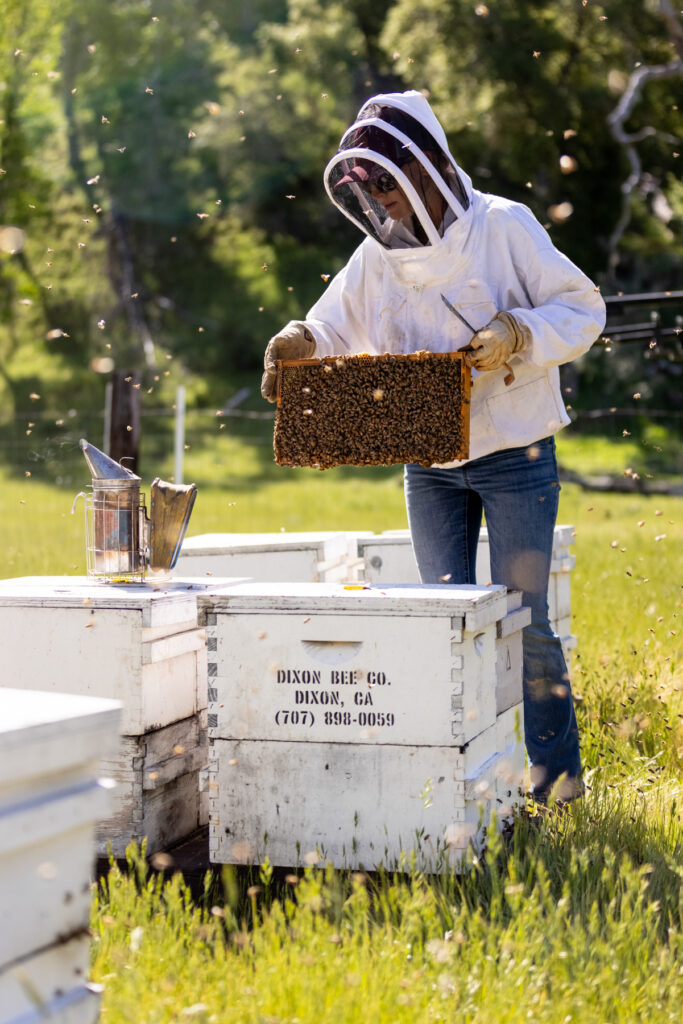
Bee Royalty
There’s a reason for the term “queen bee” — she is absolutely crucial to her hive. Throughout her typical lifespan of several years, the queen lays all the eggs for the hive, so she is literally the mother of all bees, both the female workers and the male drones.
The queen’s “daughters” live only about a month or two, and the “sons” maybe a month. As such, generations of bees continuously cycle through the hive. Since they are all offspring of the queen, her physical characteristics and even her overall demeanor set the tone for the entire hive. “You really do get a sense of temperament when you open a hive,” Riley says.
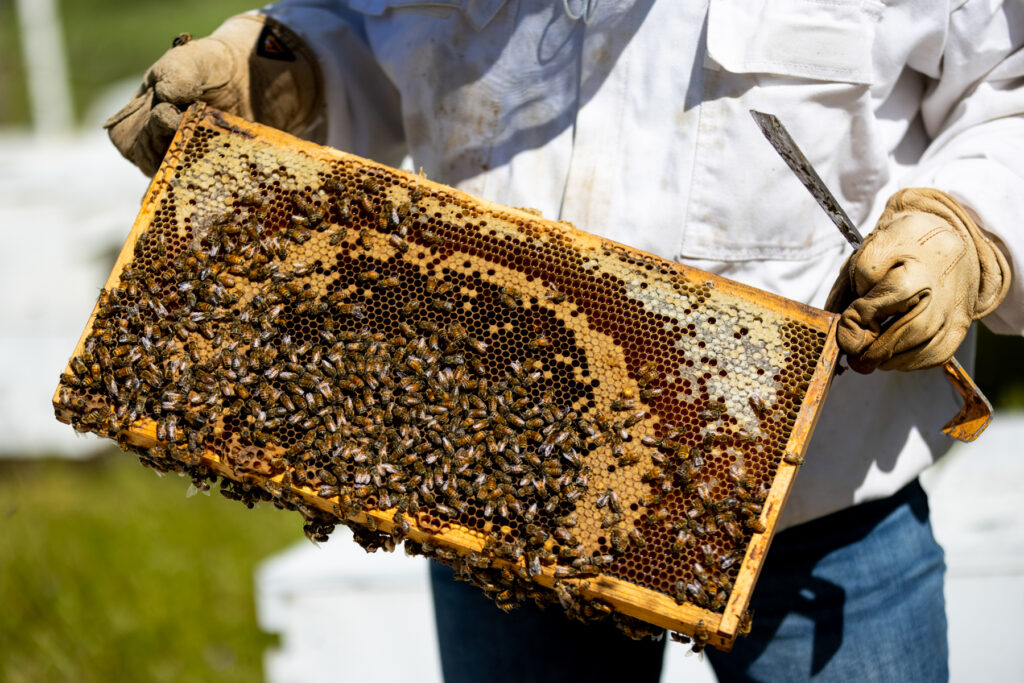
Because of the queen bee’s overarching influence on her kingdom, most beekeepers purchase queens for their hives, much the same way that cattle ranchers select animals to breed. “You want a queen with desirable traits such as temperament, hardiness and even mite resistance,” Riley explains.
That latter trait is important because mites, specifically the aptly named Varroa destructor, spread a disease that can quickly wipe out an entire hive and possibly spread to others. The mites can be chemically managed, but “it’s just not sustainable to keep treating the hives with pesticides to treat the mites,” Riley notes.
As with any purebred stock, premium queens come at a premium price — anywhere from $40 to $100 a bee. With a few hundred hives under her wing, Riley has to make some serious financial decisions when it’s time to get new queens. That’s one reason she’s thinking about breeding them herself.
“It’s ultimately my goal to replace all the queens with ones I’ve raised,” she says. That would be another source of income if she develops a successful hereditary line, but Riley realizes she won’t be buzzing all the way to the bank.
“I equate beekeeping to biology work a lot,” she explains. “I think they’re similar in that you’re not in it for the money. You do it because you believe in it, and I 100 percent believe in what I’m doing and will keep digging my heels in. I’m always learning and always striving to do better — for the bees and my family business.”
